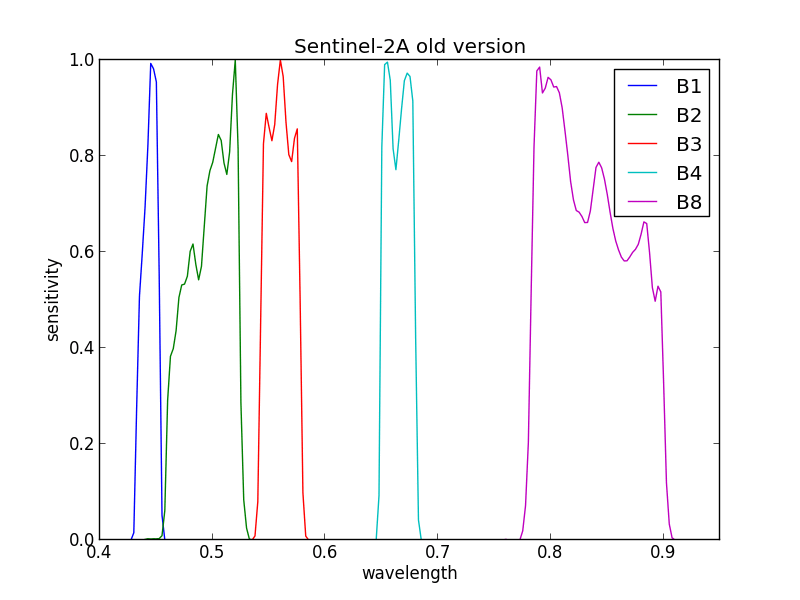Revised spectral bands for Sentinel-2A
The Sentinel-2 mission status document, edited by ESA, is a very interesting reading. On its last edition of 2017, ESA announced very discretely that the spectral bands of Sentinel-2 had been revised, following a review of the pre-flight measurements. Very few details are provided on the nature of the error contained in the previous version, and on the validation of the new ones. But still, a new version of the spectral response function is available here,, since the 19th of December 2017. The site provides an excel file with the spectral response functions.All the visible and near infrared bands have changed a little, even if only three bands have significant changes, B1, B2 and B8: B2 equivalent wavelength changes by 4 nm, B1 by 1 nm, and B8 by 2 nm. The SWIR bands did not change.
Most users should not use bands B1 and B2, as they are affected by atmospheric effects. So I do not think much of you will have to change the coefficients in your methods. But for us, who take charge of the atmospheric correction, and heavily rely on B1 and B2, it probably has an effect, and we are changing our look-up tables to account for that. Stay tuned for the results.








